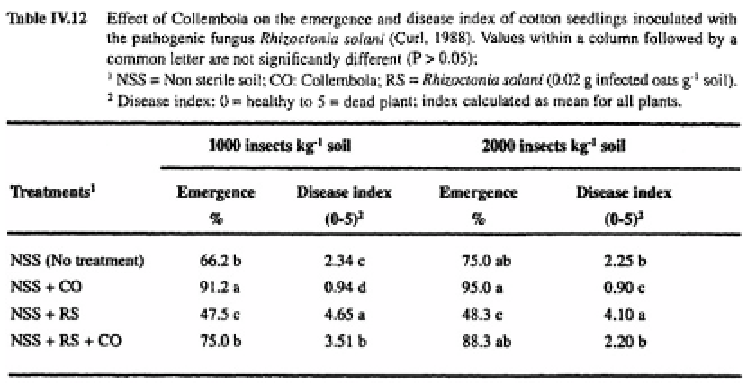Agriculture Reference
In-Depth Information
and a few other nematotrophic fungi (Kerry, 1980) are spectacular examples of nema-
tode parasites or predators. Earthworms may be effective predators on parasitic nema-
todes since their populations are often reduced in the presence of earthworms (Dash
et
al
., 1980; Yeates, 1981) (see also Chapter III.4).
However, the same mechanisms that suppress disease may also have adverse effects
on plants, either by reducing the effectiveness of root symbionts, or promoting the active
dissemination of plant pathogens. The nematodes (Shafer
et al
., 1981) or Collembola
(Warnock
et al
., 1982) that graze on pathogenic fungi may also affect mycorrhizal fungi
reducing the extent of infection and consequently plant growth. In a number of experi-
ments, mainly conducted under laboratory conditions, mycorrhizal infection was either
impeded or rendered ineffective in the presence of mycophagous amoebae (Chakraborty,
1985; Sutherland and Fortin, 1968) and Collembola (Warnock
et al
., 1982).
3.2.3
EFFECTS ON SOIL STRUCTURE
Root distribution and abundance are strongly influenced by soil physical structure (see
Chapter III.3). In turn, growing roots significantly affect the soil physical structure by
three different mechanisms: (i) the formation of macropores and channels; (ii) physical
enmeshment of soil particles and aggregates (Tisdall and Oades, 1982; Miller and
Jastrow, 1990); and (iii) aggregation through the production of exudates mixed with clay
and other mineral particles (Table IV. 13). The importance of these effects differs with the
type of root system. For example, root systems with lignified tap roots heavily influence
soil porosity whereas aggregation is effectively mediated by the dense, fasciculated root
systems of many grasses.

